PARIS—On Aug. 24, A.D. 79, a volcanic eruption left a sudden snapshot of the lives of the estimated 20,000 inhabitants of Pompeii, near Naples, Italy. This catastrophe, which is believed to have killed several thousand people, made it possible to preserve the ancients’ way of life in every detail to be revealed to us centuries later.
“Despite its terrible character the event was destined to be a source of great joy for posterity,” Stefano de Caro, professor at the University of Naples and member of the exhibition’s board, wrote in a statement to the exhibit.
Since its discovery in the middle of the 18th century, the city of Pompeii has inspired architects, writers, poets, and artists. The town, buried in the lava of the volcano Vesuvius, gives evidence of daily life in the Roman Empire like no other documentation.
Currently the Maillol Museum in Paris invites visitors to discover this ancient civilization’s lifestyle by wandering through the different rooms of a re-created house (called domus) of the legendary city. Dating mostly from a time period starting from the last century of the B.C. era to A.D. 79, the year of the tragedy, 200 exceptional objects have been gathered to testify to the refinement and modernity of this civilization.
The City’s History
Situated near Naples and at the foot of the volcano Vesuvius, Pompeii was built in the 6th century B.C. on a commercial road by the seaside. Its land, made of volcanic soil, was fertile, and the commerce and culture of grapevines flourished.
Populated first by the Oscans, then the Greeks and the Etruscans, it became autonomous in the 5th century B.C. and a Roman province in 88 B.C. A middle-sized town, Pompeii thrived with its boutiques, temples, thermal baths, and amphitheaters. Comfort, refinement, and aesthetic quality concerned the notables, of course, but also everyone at their level—the citizens and even emancipated slaves.
As opposed to Rome’s palatial buildings, the dimensions in Pompeii’s houses would have been fitting for people of our time. Houses in Pompeii were small and offered all amenities for comfort: central heating, main sewer connection, running water, sauna, as well as closed gardens integrated into the house’s layout.
De Caro wrote that most of what we know about the daily life of the ancient Romans we owe to these excavations, which were initiated more than two-and-a-half centuries ago. This information “forms the starting point of our imagination about this civilization” and is reflected in fiction like the movie ‘Gladiator’ or Lindsey Davis’s novels, he wrote.
Following a Guest
The exhibition proposes visiting a domus in Pompeii as if one were a real guest of the host. We follow the itinerary of clients and guests of honor, received firsthand in the atrium, where one can admire the host’s possessions before meeting him.
A safe made out of iron and bronze and adorned with big cats is displayed so the visitor can immediately estimate the owner’s wealth and status.
Then he contemplates the frescoes depicting a winged genie—as each house has their guard spirit. The winged genie holds a cornucopia (horn of plenty), representing the inexhaustible benefits and goodness provided by nature. On his shoulders, he is carrying a woman whose head is encircled by a halo, taking her into a celestial world.
Nearby, Dionysus, the god of grapevine, wine, and fertility, sits on a throne, with a goblet in one hand and in the other the thyrsus, both a spear and a scepter. Since the inhabitants of Pompeii lived essentially from cultivating grapevines, Dionysus was given an important place in the imagery of the house.
The thyrsus, as in most of its representations with this god, is decorated with ivy leaves and has a pine cone at its top. This stick has the power to extract wine from the earth. A tiger is depicted at the god’s feet.
The visitor is kept in awe before the beauty of the character and the harmony of the frescoes’ colors: gold and light green, a kind of pink, orange, and quasi-transparent white, which stand out against an earthy-red background.
The atrium was a kind of entrance hall or vestibule that had a refreshing effect on the house in the summer. That’s were the rainwater was collected in basins linked to an underground cistern. The white marble table with carved legs was there to receive the objects exhibited by the host, as well as to make a statement on his social rank.
In another area was the lararium, which contained an altar for offerings and a niche (recess or small alcove), presenting the protective divinities of the house: Aesculapius, the god of medicine; Mercury, the god of commerce; and Isis, the Egyptian goddess of good fortune.
Next: The Culina ...
The Culina
The visitor walks ahead and enters the culina, the kitchen, a small room, containing wonders, including cake pans in the shape of scallops, hearts, and leaves; sieves, in which the holes form patterns of delicate flowers; a clay pitcher in the shape of a rooster; and a decorated pair of scales with finely carved weights.
Fineness and beauty are not spared in the kitchen. Paintings on the walls are not lacking: still life, divinities. We also learn about condiments, as the host was an important garum dealer.
Garum is a sauce made with fish intestines and salt. Our merchant has made a name with the quality of the mackerels used to produce the sauce. The garum was sold in 20-inch-high amphora-shaped bottles.
The Garden
To reach into the private space of the house, our guest has to walk through hallways where the walls are covered with paintings depicting the adventures of a god or a mythological figure.
He stops in one of the rooms that opens up into the arcade (portico) surrounding the private garden (hortus). Each house featured an integrated green space, which one could access through multiple rooms. The size of that space varied according to the owners’ wealth.
The hortus might simply have flowers, shrubs, and aromatic herbs. The wealthy owners had magnificent parks with fruit trees. A celestial garden, drawn from the imagery of oriental paradises and Greek mythology, would face the real garden.
Nymphs (water divinities), peacocks, and fantastical animals could be seen on paintings of an illusionary style that would add to the garden’s richness with its mosaic niches, nymph-shaped fountains, and fountain spigots in the shape of small animals such as dolphins, frogs, and turtles.
The layout for the circulation of the water in the garden was as important visually as acoustically.
The Triclinium
At last our guest is invited into the triclinium, the dining room, where one would eat in a reclining position on beds and cots, depending on the guest’s importance. This is where the intricate staging of social status intervenes.
The participants’ setup follows strict rules: the host to the right, important guests in the center, and others on beds to the left. Every social relation in the Roman society was experienced through dining, the meal called cena, be it of a familial or business nature.
This is where the most opulent decor in the house could be seen: mosaic-covered floors, walls covered with frescoes narrating the lives of gods, statues, gorgeous dishes, headboards carved in the shapes of satyrs and swans, and small ornamental objects.
So distant but so familiar, all these objects collected under the ashes leave a profound impression on the visitor: the refinement of the silver spoon with its pointy handle for opening shellfish, blown-glass vessels, ceramic or colored-glass dishes, silver cups with two handles, and lamp bases in the shape of trees from which oil lamps are hung.
A small oinochoe, made of bronze encrusted with copper and representing a woman’s head, testifies to extremely skillful and fine work. This little masterpiece probably had a mere ornamental function, its sublime beauty purely for its owner’s prestige. Since it lacked a base, it couldn’t have contained any liquid.
The list is still longer: The exhibit continues with baths, jewelry, and other treasures. One after another, these objects fascinate us and bring us back to the beginnings of our own history.
The exhibition is open through Feb. 12 at the Musée Maillol in Paris.

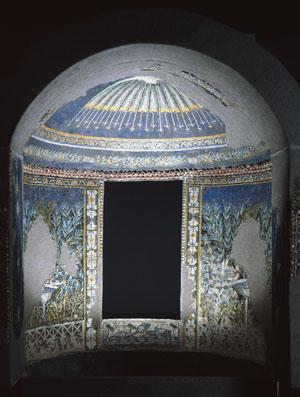
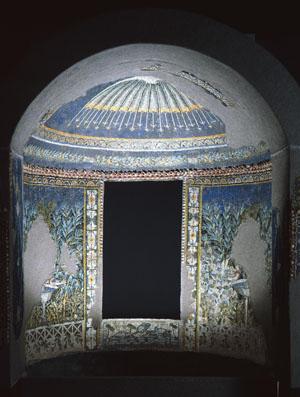
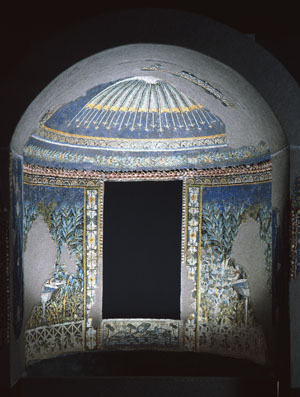
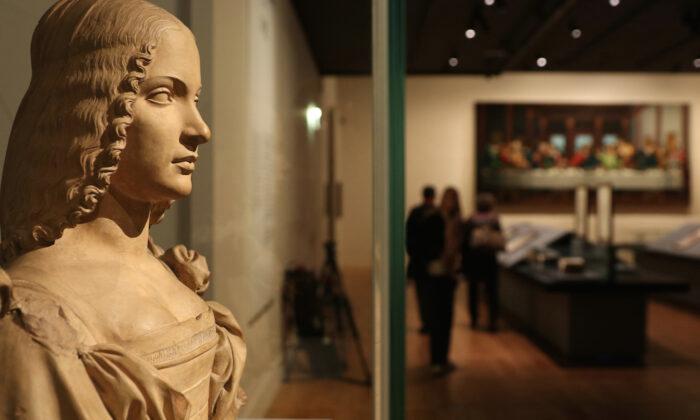

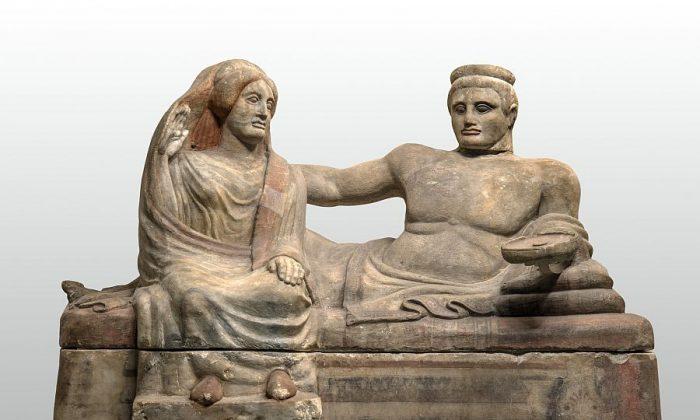
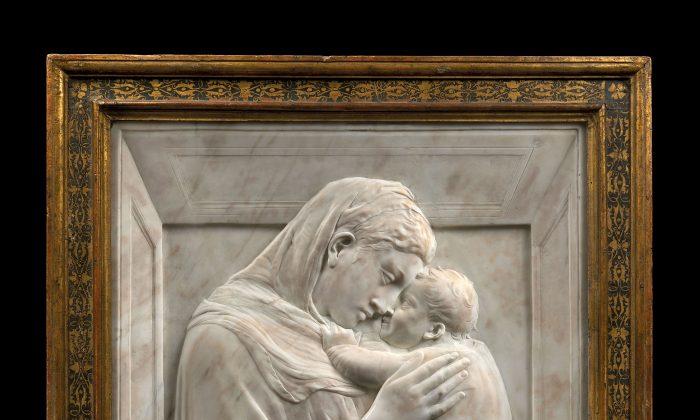
Friends Read Free